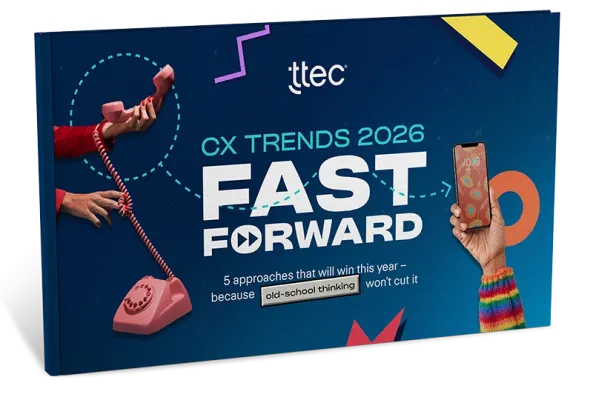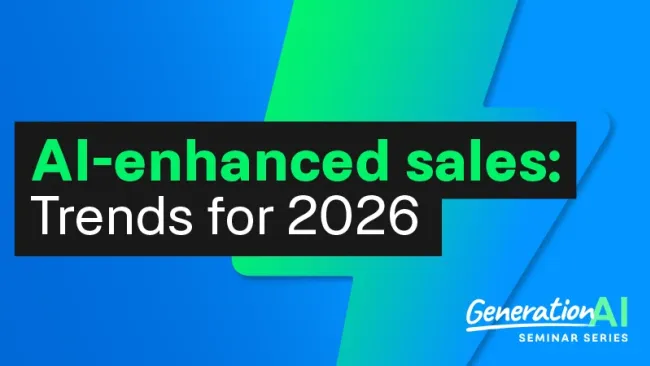As we head into 2026, AI’s novelty is wearing off in the sales world. It’s no longer the shiny, new tool everyone’s wondering about – and that’s not a bad thing; it just means the conversation is shifting.
AI proved its value in sales in 2025. Now that the buzz is settling, it’s time for teams to get practical about how it can truly work for them, starting with strong data foundations, governance, and other behind-the-scenes essentials that make AI deliver.
Holden Olsen, TTEC’s vice president of global sales delivery, and Everest Group Partner David Rickard discussed this in a recent webinar, “AI-enhanced sales trends for 2026.”
AI success starts will strategy
There’s no shortage of AI tools available to sales teams, but you need to make sure you’re choosing the ones that best fit your needs. Resist the urge to adopt technology merely for technology’s sake.
“Everyone’s so excited about what these tools can do, but many times there’s not as much focus on change management and overall adoption and how to drive that,” Olsen said.
Ask yourself these questions as you consider or roll out new tools:
- How will we operationalize these?
- How will these work in tandem with other tools we already have?
- How will we train our team to use these tools and avoid information overload?
- What are these tools’ downstream impacts?
“Without a real strategy for how to leverage the data to make everyone’s lives easier…adoption struggles,” Olsen said.
Rickard agreed that strategy should guide AI adoption, not vice versa. Don’t buy tools and then look for places to use them, he said. Instead, look for problems or friction in the sales journey and seek out tools that can solve them.
Prioritize data and governance
Some sales organizations are struggling to realize ROI on AI investments, and a major reason pilots fail is a poor data foundation, Rickard said.
“Data debt is the number one barrier,” he said, urging companies to invest in data readiness. Too often, incomplete data and disconnected systems keep sales leaders from realizing AI’s full potential.
Disconnected systems present another major challenge, he said. When systems don’t (or can’t) talk to each other, sellers struggle to manage and toggle between multiple platforms. It becomes confusing, overwhelming, and counterproductive, so organizations need to streamline.
Ultimately, AI will only succeed if sellers and customers alike trust it, so governance will become increasingly important in 2026, Rickard added. Few things erode confidence faster than intellectual property leaks or hallucinations, so sales organizations need strong governance plans in place.
The future of sales is AI-powered
AI has the potential to reshape various aspects of sales enablement in the coming year, Olsen noted:
- During hiring, AI can enable teams to screen and test candidates at scale, across multiple languages
- During onboarding, AI-powered bots can act as customers during realistic role-playing scenarios and give associates immediate feedback, increasing speed to proficiency
- In production, AI can quickly identify performance gaps, track associates’ improvement, and provide coaching scenarios to aid team leaders
AI is evolving from an assistant to a true selling partner, from automating tasks to driving measurable impact, Rickard said. In the coming year, it will play a larger role in directing sales planning decisions.
“What we’re really seeing is AI shifting sales enablement from efficiency to effectiveness,” Rickard said. “The next evolution in 2026 isn’t just about AI; it’s better orchestration of the AI that connects systems, insights, and sellers into a single flow.”
To learn more, watch our on-demand webinar, “AI-enhanced sales trends for 2026.”
















